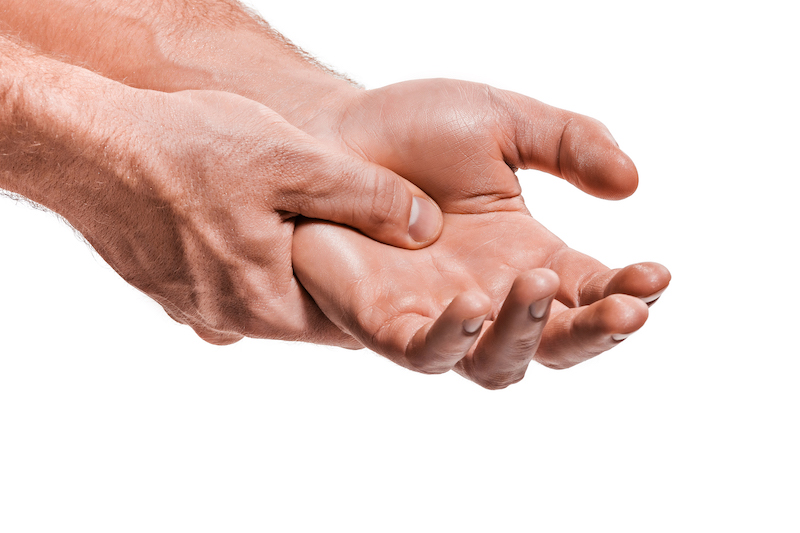Do you shudder at the prospect of working at a desk for 40 hours per week? Do you long to heal others? Does the human body fascinate you? If you answered yes to all these questions, you should be a massage therapist (if you’re not already one!). There are few other jobs that allow for such active, fulfilling work. Yet at the same time, the repetitive nature of massage therapy presents the potential for injury. In this blog, we’re looking at the most common injuries among massage therapists, as well as how you can avoid injury while providing massage. Portland massage therapists will appreciate our conclusion: a list of our upcoming massage classes for preventing therapist injury.
Common Injuries among Massage Therapists
Tendinitis and Tenosynovitis. Tenosynovitis is a condition that may be caused by repetitive movement, infection, and trauma. A tenosynovial sheath surrounds certain tendons; its job is to prevent fraying through protective lubrication. If this sheath becomes inflamed, pain, swelling, stiffness, and difficulty moving the joint may manifest. Tendinitis is inflammation of a torn tendon; it has similar symptoms.
Repetitive movements, particularly the use of the hands to deliver high-force treatments, can lead to tenosynovitis and tendinitis. Common symptoms include a traumatic onset, with pain in a localized area which is hot to the touch.
Carpal Tunnel Syndrome consists of wrist pain stemming from median nerve compression. The median nerve controls movement of the thumb and fingers; it travels through an opening in the wrist called the carpal tunnel. Repetitive movements can cause swelling in the carpal tunnel, leading to itching, tingling, or burning sensations anywhere between the fingertips and the shoulder. If untreated, grip strength may decrease, as pain and cramping worsen. Permanent muscle damage is possible.
While carpal tunnel syndrome is well-known even among the general public, it is by no means the only nerve impingement injury that manual therapists face. Thoracic outlet syndrome is another common nerve impingement among massage therapists.
Overuse Syndrome is a catch-all term for any muscle/tendon injury that doesn’t fit neatly into a diagnosis. Basically, overuse injuries occur when muscles and tendons are repetitively stressed. An overuse syndrome typically onsets gradually and requires a long time to heal. Syndromes include achiness, soreness, or tightness. Sharp pain may be present, but typically for shorter time periods.
How to Avoid Injury while Providing Massage Therapy
Stopping the repetitive movements that cause overuse syndromes can be financially challenging for massage therapists, so the best approach is to prevent injury in the first place through mindful massage therapy practice.
Warm up before providing therapy. Consistently stretching your wrists and forearms for five minutes before each massage session will decrease your chances of injury.
Take breaks. Ideally, you should have a 10—15-minute break between sessions, as a minimum. Working without breaks overstrains muscles and tendons and causes injury.
Strength and conditioning. Overall strength is critical for massage therapists. For instance, without good core strength, it is difficult to maintain a pain-free standing posture. Invest in your massage career by hitting the gym regularly, maintaining a schedule of cardiovascular and strength training.
Practice Good Posture, particularly while delivering massage therapy. Awkward positioning can place undue pressure on joints, muscles, and tendons. Low back pain and postural neck pain are likely outcomes of leaning too far over the table or working without proper body mechanics. Body-based mindfulness practices such as yoga can help therapists develop excellent posture. In general, it is a good idea to keep your elbows close to your body while delivering treatment. Having your table at the proper height is also key for injury prevention.
Variety of Treatments is key for injury avoidance. If you’re providing back-to-back deep-tissue treatments, five days a week, it’s almost inevitable that you will experience an overuse injury. Vary the techniques you use with clients. Aim to book a low-pressure client (such as one seeking lymphatic massage) after a session with more intense treatment.
At our massage therapist school, we provide resources to keep our students and alumni safe and injury-free. Here are a few courses we’re offering toward that end:
Proprioceptive Neuromuscular Facilitation
July 28th, 2019 from 9:00am-6:00pm
1515 Market Square Building, 4th floor, Portland, OR 97201
Cost: $205
Acquire new techniques for lengthening muscles and improving outcomes while saving your hands. Your effectiveness as a therapist will improve while the longevity of your career increases.
8 contact hours
Integrated Manual Therapy & Orthopedic Massage for Upper Body Condition
October 5th and 6th, 2019, from 8:30am to 6:30pm
1515 Market Square Building, 4th floor, Portland, OR 97201
Cost: $364. Early bird registration cost of $314 through September 5th, 2019
Learn research-based manual approaches for approaching tendon pain. These structurally oriented, pain free techniques will deliver results for clients suffering rotator cuff injuries, shoulder impingement, tendinitis, carpal tunnel syndrome, and more. Learn self-care techniques equally useful for client and therapist alike.
18 CE Contact Hours, NCBTMB approved
Fijian Barefoot Massage To Go
January 25, 2020, from 2:00pm-6:00pm
1515 Market Square Building, 4th floor, Portland, OR 97201
Cost: $100
This technique avoids pressure on your upper body, reducing your chances of repetitive injury. Learn how to use your feet to treat clients’ backs, shoulders, and gluteals. This hands-saving technique will add variety to your massage practice.
4 contact hours, NCBTMB approved
Keep abreast of these and other upcoming CE offerings at our Continuing Education website.




